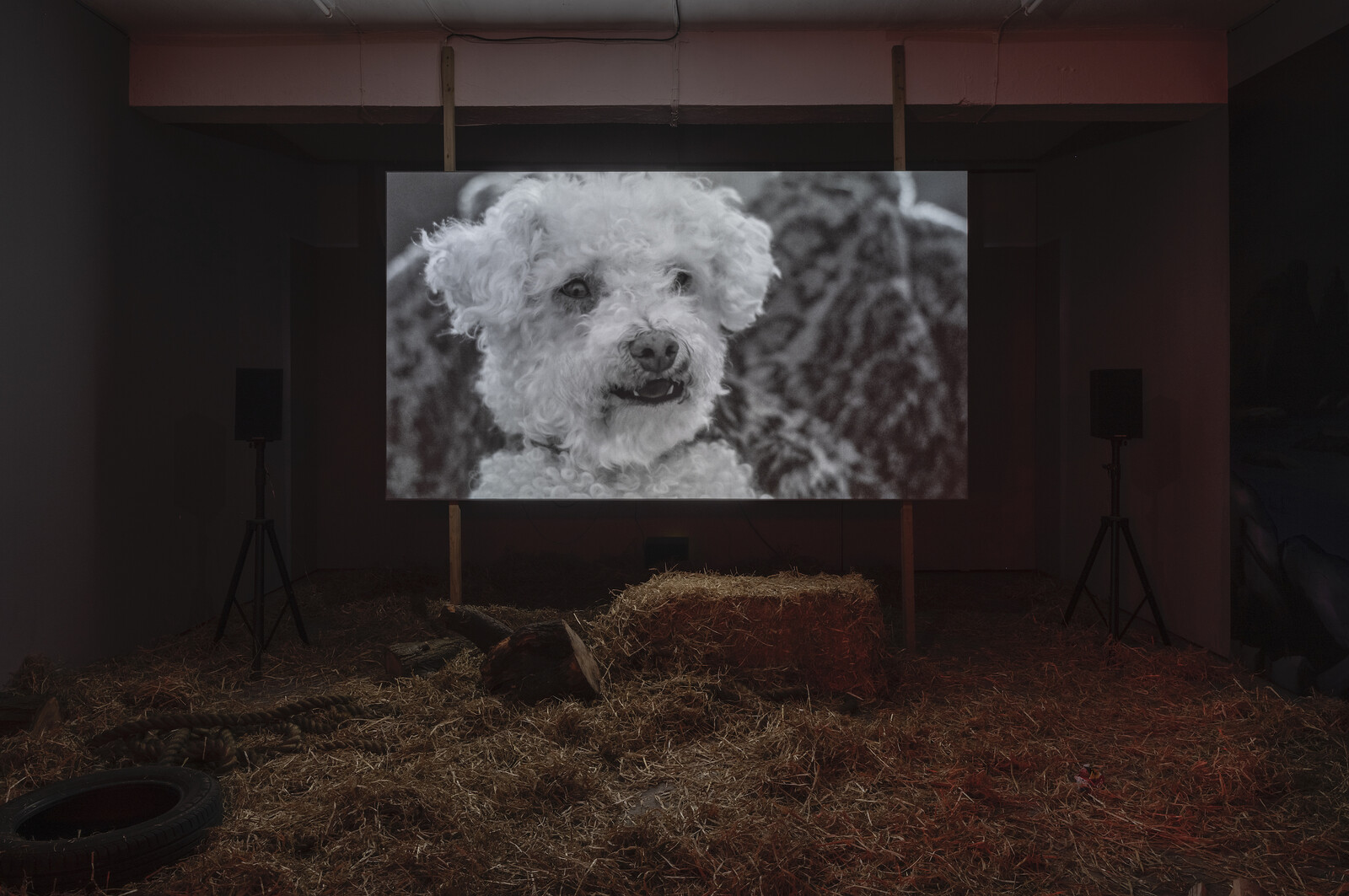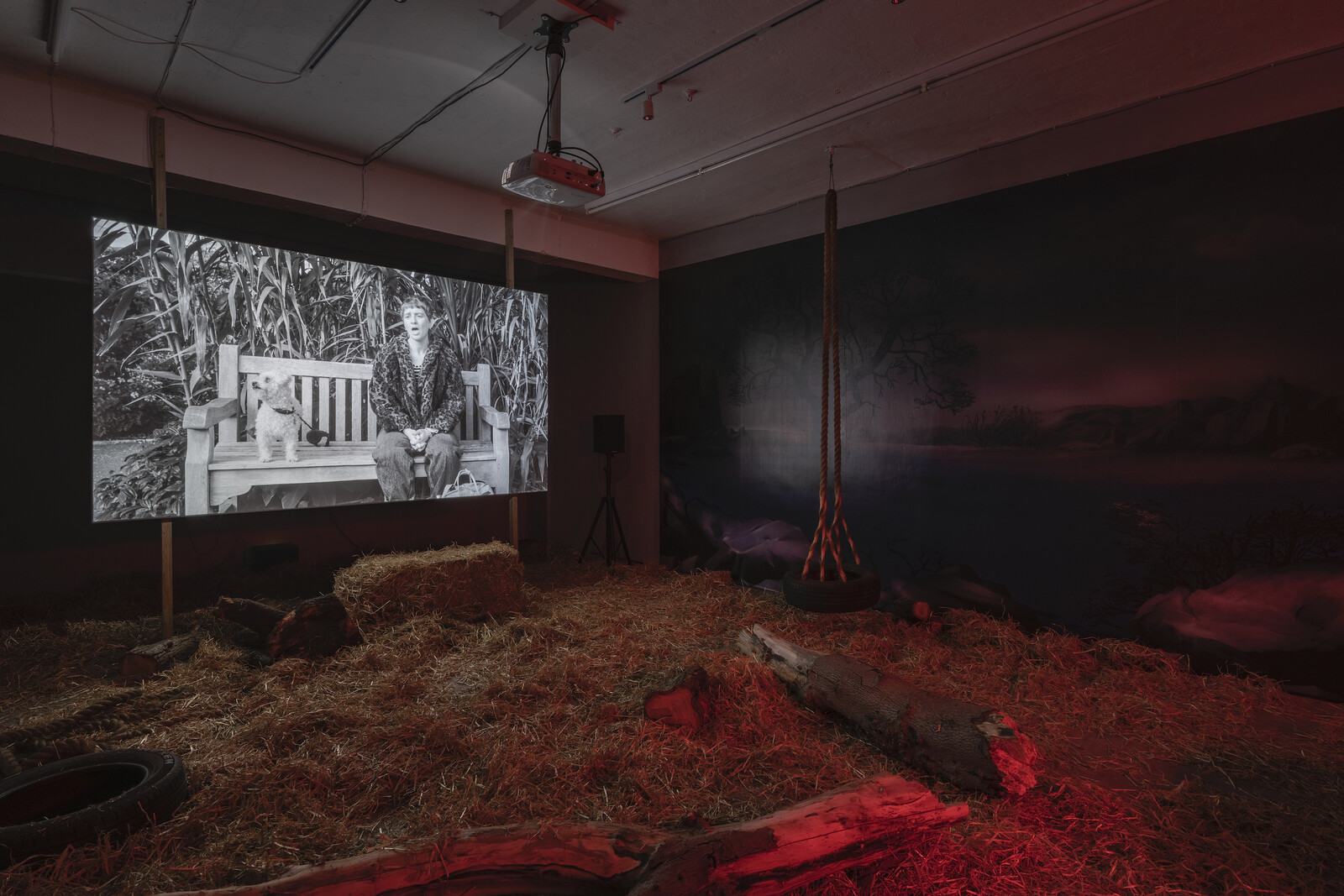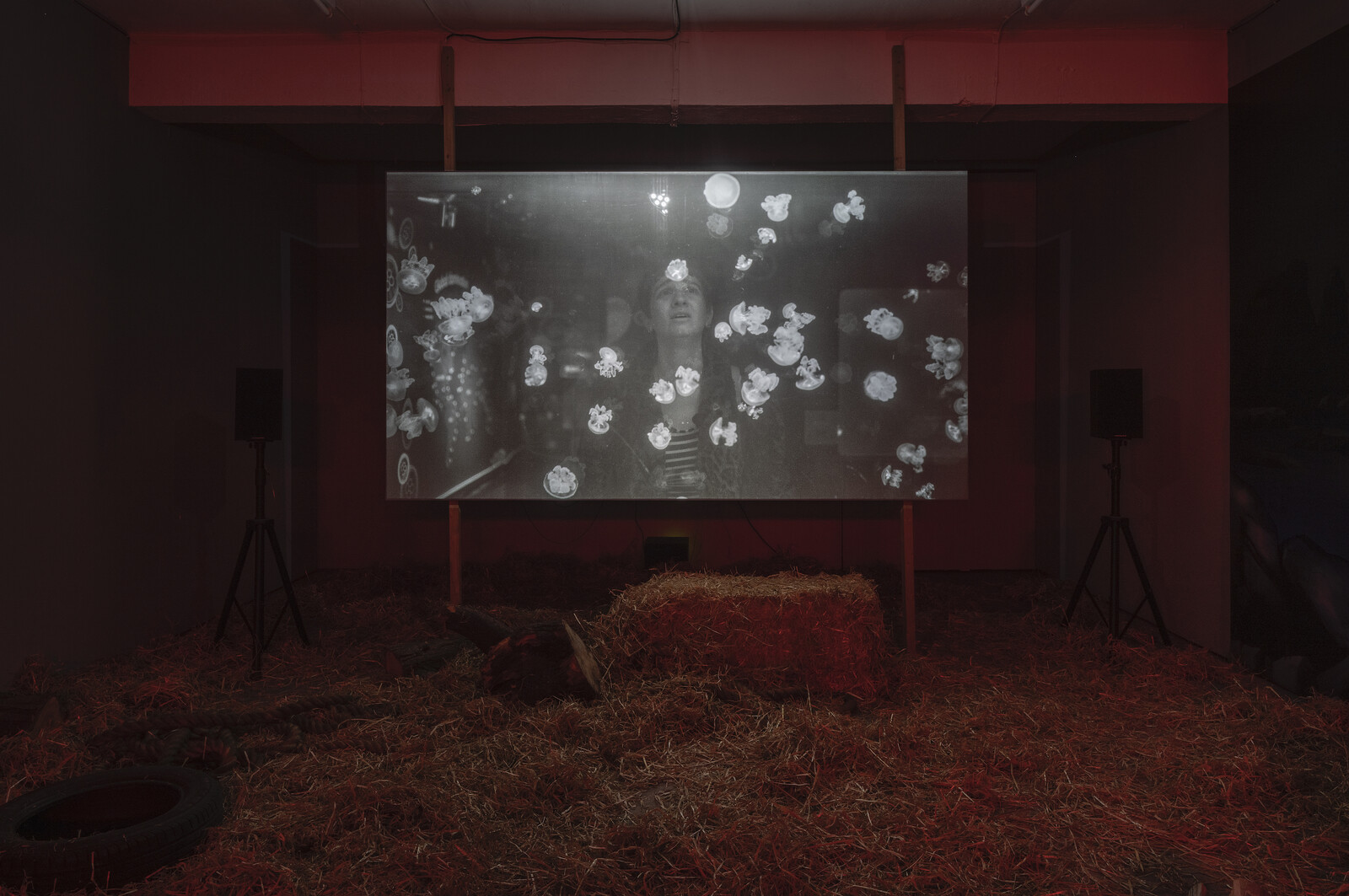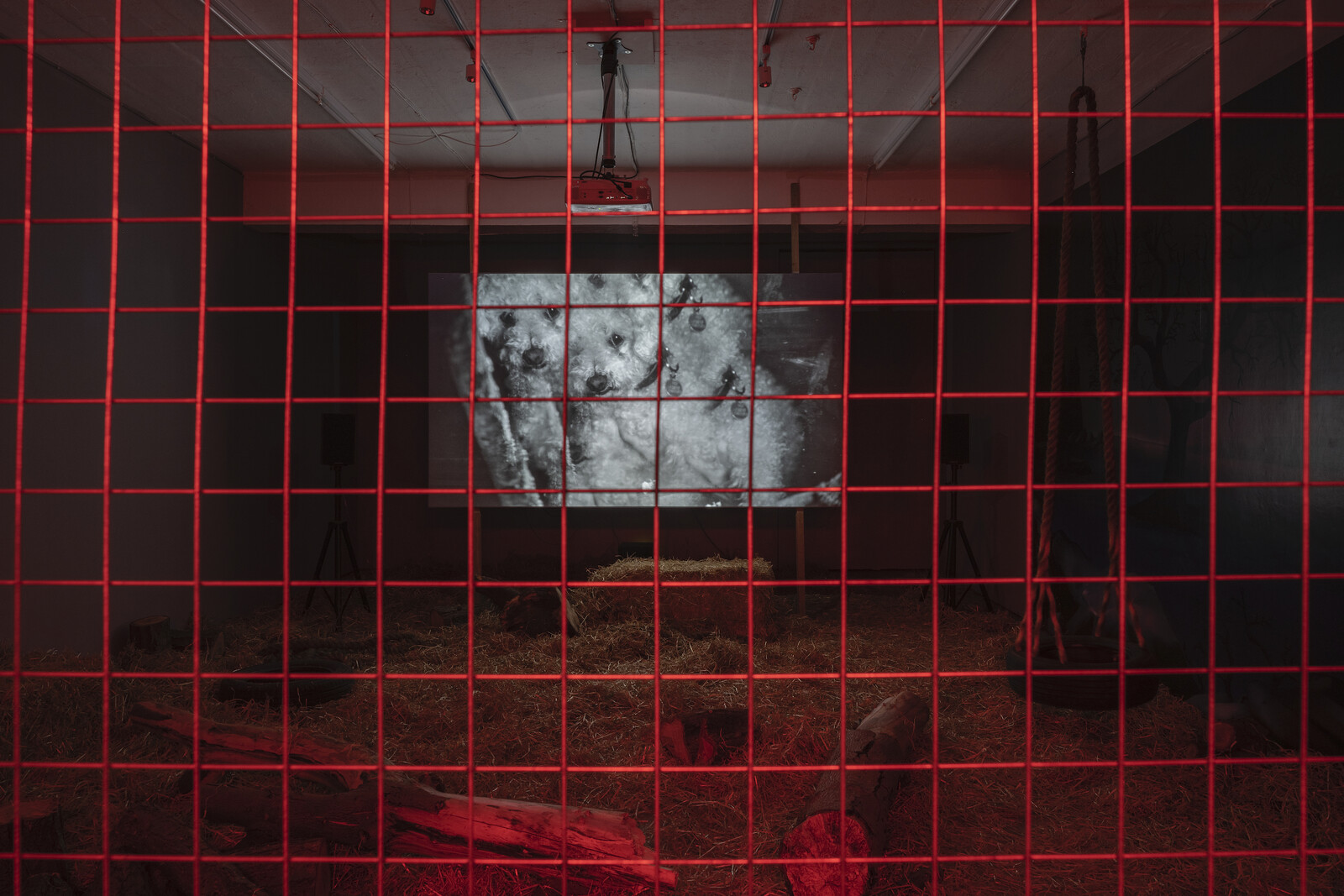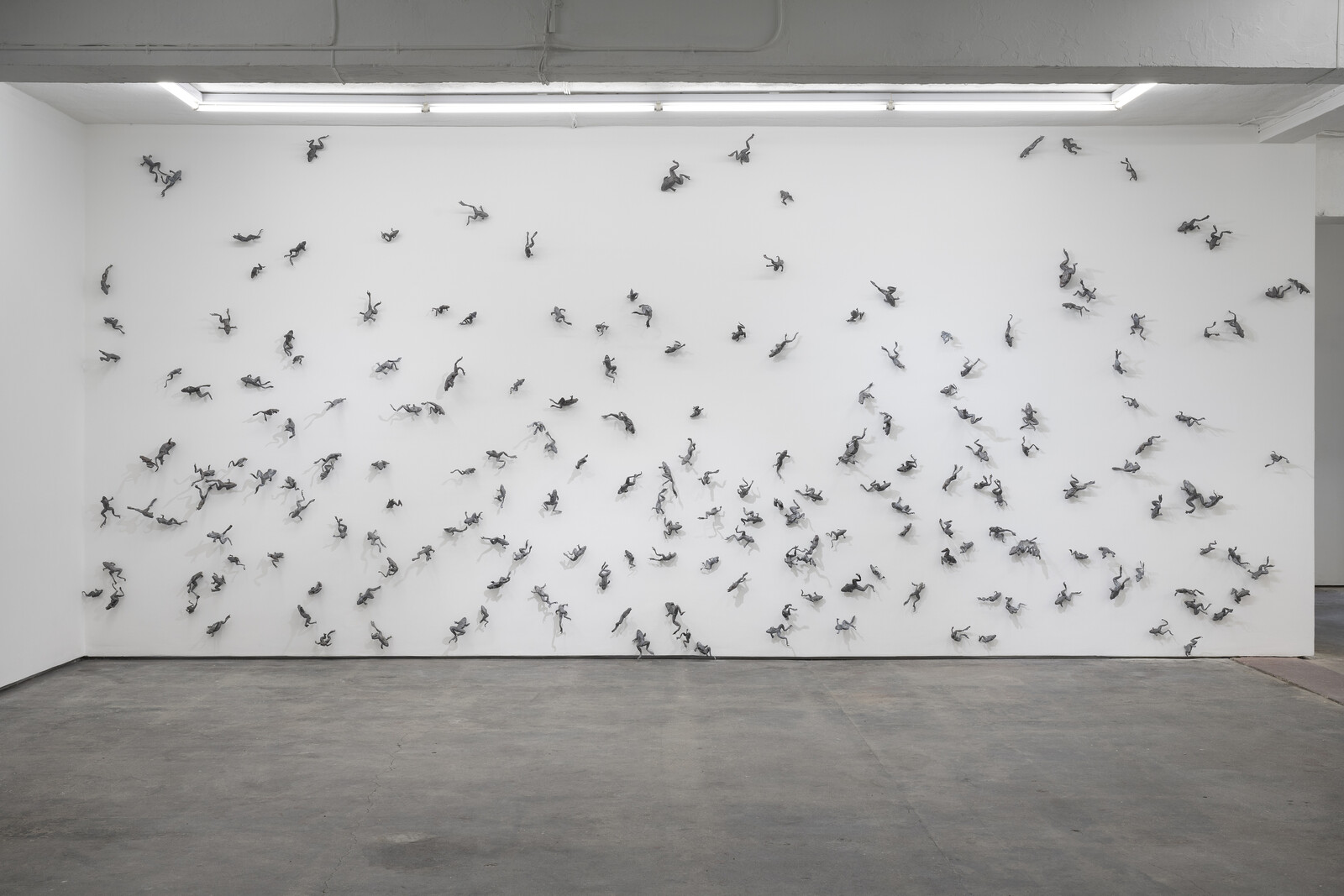Watching animals in a zoo, Patrick Goddard’s show at Seventeen suggests, disapprovingly, is a bit like looking at art in a gallery: you stroll between marvels, whose only reason for being is to be seen. At the entrance to the gallery are three grisaille ink paintings (all 2022) behind reeded privacy glass. Each stars a bichon frise dog: watching a burning car (Whoopsie at the End of the World), saying “up against the wall!” through a speech bubble (Whoopsie, Up Against the Wall), and next to a naked woman under the word “APOCALYPSE” (Whoopsie’s Dream). Against the quietness of these works on paper, a sculptural installation occupies a whole wall. Plague (Downpour) (2022) consists of 200 falling frogs cast in recycled lead and attached to the wall. Each is unique, its body caught in baroque contortions: some graceful, some agonized, some resigned. These works introduce the show’s prevailing theme of our entanglements with animal life, from pets to pests.
Humans enlist animals into satisfying their needs and desires. Sometimes such animals are threatening or toxic; usually, they are unfathomable. As John Berger points out in “Why Look at Animals?,” a 1977 essay that inspired Goddard, animals have been stripped of their independent lives and their otherness and become spectacles. “What’s the point of animals if you can’t see the bloody things?” Whoopsie asks. Zoos replace the mystery of other ways of being with a blank, captive stare. They are as much a failure of the imagination—an aesthetic failure—as they are a moral cruelty. While our relation to non-human life is often a matter of life and death, bound up with environmental crises, it is also ripe for comedy. Goddard’s 38-minute film Animal Antics (2021), playing in a room turned into an animal enclosure, complete with hay bales and a tire swing, takes place in a future dystopia in which “wilderness” has ceased to exist.
In this world, animals no longer live outside of captivity as pets or exhibits—in this case, in London Zoo in Regent’s Park. Sarah, a young woman in dungarees played by Phoebe Frances Brown, is spending a day at the zoo with Whoopsie, her ranting female bichon, voiced by Goddard. The belligerent dog is obsessed with speech. She lauds her supremacy over the mainly mute animals before her, though she makes an exception for her beloved meerkats, who can speak basic English (“They’re just parroting what they’ve been taught is the grammatically correct answer,” Sarah says). Does speech make Whoopsie human? A linguistic partisan, the dog is more invested in the cause of human superiority than Sarah. “If you can’t speak, you can’t imagine,” Whoopsie says. “That, my friend, is a fact.”
Sarah and Whoopsie stroll around the zoo, looking at the animals and talking. They stop for lunch. The black-and-white film lends dignity to the vultures, beetles, jellyfish, penguins, gorillas, and ostriches on which the camera lingers. Whoopsie is usually unimpressed with the animals who, she thinks, lack culture by definition. Penguins “don’t think properly.” “All animals should be made to talk,” she says. “Except the ones that we eat. They should just shut up.” At the end of the day, Whoopsie is put in a cage in the trunk of Sarah’s car and driven off.
Whoopsie ventriloquizes, in order to critique, the much-caricatured post-Enlightenment view that speakers of human languages occupy the pinnacle of a pyramid of living beings, and that outside of human minds there is nothing to know, and nothing worth knowing. Animals are silent, mindless automata: “wet machines,” Whoopsie says. She voices the conceptual underpinnings of a world where zoos hold the only former wildlife that remains, and she veers, at points, into fascism: “Lock them up, lock them up, lock them up,” she chants, about gorillas. Closing humanity off from the rest of life on the basis of our linguistic capacity, the film suggests, results in a kind of imprisonment on both sides.
Whoopsie has conflicted feelings about animals: she insults them, but she also falls in love (“I love them I love them I love them I love them,” she says, about meerkats). She fears them (“There are justifiable concerns about the animals escaping their confines, Sarah”) but she is also mawkish about them (“I wish I could just cuddle them”). The desperate urge of a talking dog to seal herself off from the rest of animal life, a desire which manifests in either disdain or reverence for the “natural” world, hints at the destruction that ensues when humans feel similarly. But it is also perfect material for comedy. In an art world with no shortage of didactic responses to environmental crisis, Goddard’s show is enlivening.
